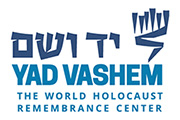Yiddish Publications in the U.S.S.R. (from the Late Thirties to 1948)
Until the outbreak of World War II, eighty per cent of Yiddish works were printed in government publishing houses in Moscow, Kiev, and White Russia. Such centralization enabled absolute control of reading matter. Availability was hindered by faulty distribution. In 1937 there were about 15,000 publications in Yiddish. In 1939 some 339 books and pamphlets in Yiddish were published in the USSR. Centralization prevented renewal of Yiddish publishing in 1948. The monthly circulation of Yiddish periodicals was disappointingly small — less than 2,000 each. At the beginning of World War II and up to 1941, with the addition of new territories, Yiddish publishing in the USSR increased. Furthermore, more works by Jewish authors were translated into Russian or Ukrainian. Following the German invasion of Russia, the number of publications in Yiddish rapidly declined. Interestingly, both Soviet writers and poets and Polish émigrés hardly mention the brutality of the Germans and the murders of Jews. During the first months after the German invasion, Yiddish publishing was almost completely wiped out. However, in 1942/43 the Soviets, for propaganda purposes, permitted the establishment of the Jewish Anti-Fascist Committee, which joined actors, artists, scientists, scholars, and soldiers together in one body. Jewish literature began to be published again, both propaganda translations and Jewish belles-lettres. Between 1941 and 1943, at least 100,000 books in Yiddish were published, whereas in the three-year period between 1946 and 1948 only 115 books and pamphlets saw light of day, mostly from Emes in Moscow. Thus, the Soviets hoped to suppress the Jewish national awakening.
